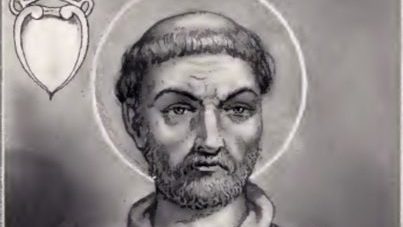Pope St. Callistus I is celebrated as a saint and martyr on October 14. Because there are no trustworthy biographical accounts of the pope’s life, historians rely on an account written by his contemporary, Hippolytus of Rome. Hippolytus was eventually canonized as a martyr himself, but for many years he vocally opposed the pontificate of Callistus and three of his successors, to the point of making himself the first “antipope.” Despite this, his account of Callistus’ life and papacy holds important information.
Callistus began his career as a domestic servant, eventually taking over his master’s banking business. When the bank failed, the master blamed Callistus, who attempted to flee. He was demoted to a manual labor position in Rome.
Eventually Callistus was sent to work in the mines, possibly due to persecution of Christians. He was eventually freed under Pope St. Victor I. Under the next pope, Zephyrinus, Callistus was made a deacon and took over caring for a major cemetery, which is still known as the Cemetery of St. Callistus. He also advised the pope on major controversies of the day, and when Zephyrinus died in 219, Callistus was the natural successor.
Hippolytus accused Callistus of sympathizing with heretics, and resented his clarification that even the most serious of sins could be absolved after sincere confession. Callistus’ assertion of divine mercy also offended Tertullian.
Although Callistus could not persuade Hippolytus and his followers of his rightful authority, the Church has always acknowledged the orthodoxy and holiness of Callistus as pope and saint. His death in 222 was attributed to an anti-Christian mob.

